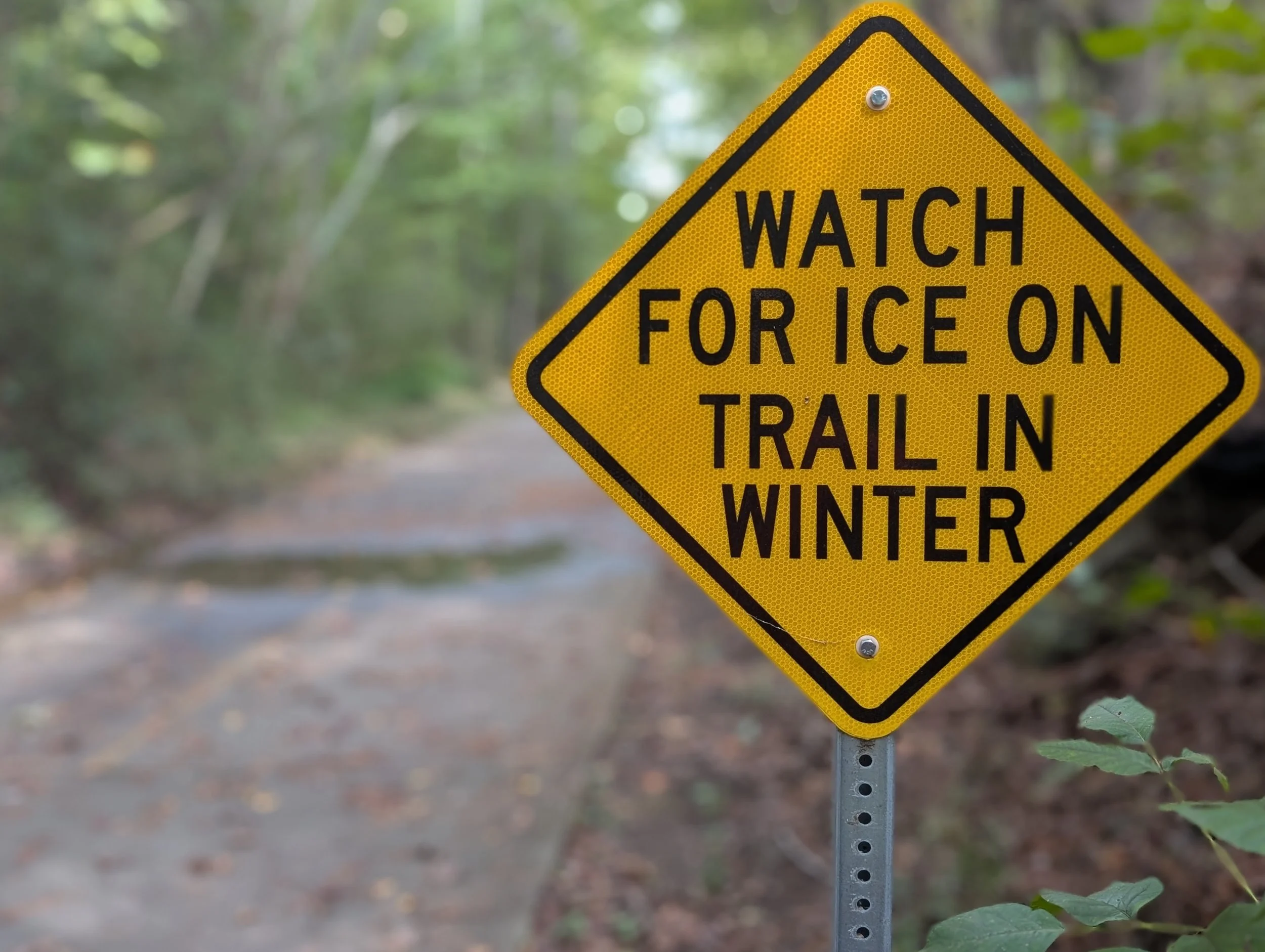When Good Intentions Meet Bad Execution
I love riding my bike on a 61-mile bike trail called the Silver Comet. It’s a couple of miles from where I live and is part of the Rails-to-Trails Conservancy program. It winds through trees and tunnels and over bridges, has plenty of shade and is usually not very crowded.
Even though there are no cars to worry about, you still have to watch out for hazards. Some of them come with warnings, like a sign for a tree down or uneven pavement ahead. Others come with no notice at all, like snakes slithering across the path, stray dogs darting out of the woods, or the time I ran into a llama standing in the middle of the trail.
But recently, one warning sign stood out to me in a way it never had before.
I’ve seen the “Watch for Ice on Trail” sign hundreds of times before. It marks a spot on the trail that’s always wet, and in winter it ices over and becomes really dangerous. The problem is where the sign is placed. You don’t see it until you’re about four feet from the icy patch. At that point, it’s already too late to slow down, stop, or walk your bike. A new rider on the trail would quickly find themselves sprawled on the pavement.
The good intention was to let people know to be careful. The bad execution was placing it so close to the ice that riders didn’t have time to prepare.
Bill Gates is credited with saying, “Effective execution of a bad idea is better than the bad execution of a good idea.” If that’s true, then think about how powerful it is when you actually execute a good idea effectively.
What’s the point? A good idea can go either way until it’s executed. To keep the original intent, take the time to think through the best way to bring a great idea to life. Consider the details, nuances, variables and what people will need in order to succeed. When you pair good intentions with thoughtful execution, you give your ideas the traction they need to keep you moving forward regardless of what’s on the path in front of you.


